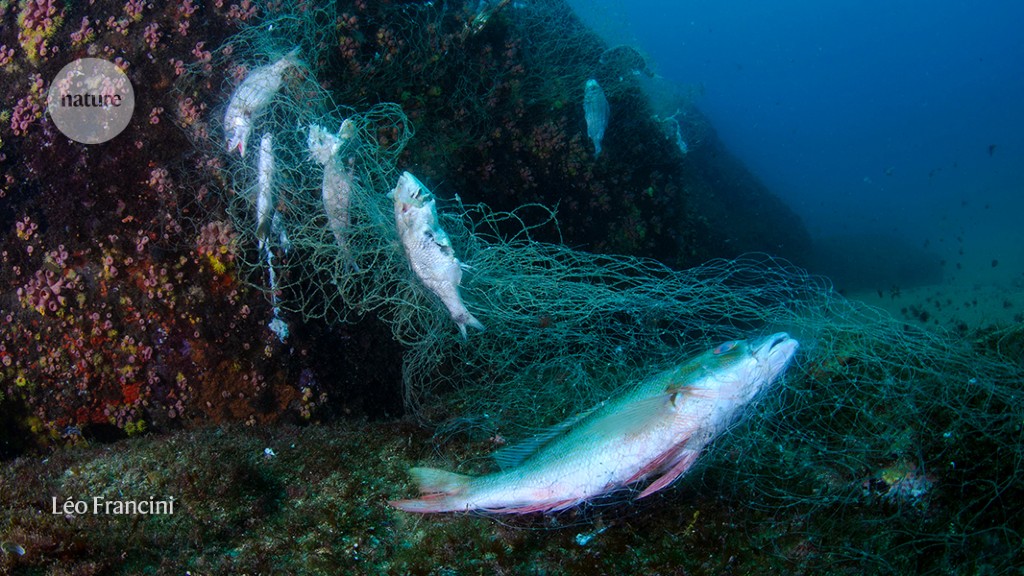Striking images show plastic litter in the world’s most remote coral reefs

Fishing nets, packaging and other debris threaten wildlife in some of the ocean’s deepest reef ecosystems
A survey of 84 coral ecosystems at 25 locations across the Pacific, Atlantic and Indian ocean basins found plastic debris from human activities in almost all of them, both shallow and deep.
The study team, led by marine biologist Hudson Pinheiro at the University of São Paulo, Brazil, set out to survey biodiversity on remote reefs, which the researchers expected to be pristine. But during their sampling, they noticed that “these places are not as pristine as we were thinking”, Pinheiro says. It turned out that 77 of the 84 ecosystems contained macroplastics — plastic items measuring 5 centimetres or more across. The researchers found that this type of plastic waste made up 88% of all human-generated rubbish on the reefs1.
Much of the debris found in the more remote locations was discarded fishing gear — including nets, hooks and lines. In some places, the team found evidence of “ghost fishing”, in which discarded fishing nets become stuck in the reefs and continue to trap and kill fish.

An old shoe lodged among corals on a reef near the Philippines.Credit: Luiz A. Rocha, California Academy of Sciences
In non-reef marine ecosystems, artificial plastic waste is usually concentrated near the surface and consists mostly of consumer items. But reefs are different — Pinheiro and his colleagues found that deeper reefs contained more macroplastics than shallow ones. There could be several reasons for this: strong waves can carry plastic away from shallow reefs or push it to the depths, for example. And clean-up efforts to remove plastic happen mainly on shallow reefs.
Marine organisms live alongside waste plastic even at a depth of 130 metres.Credit: Luiz A. Rocha, California Academy of Sciences
The deeper reefs are home to abundant fish species, which might explain why fishing nets and gear dominate the litter in these ecosystems, the authors say. As fewer and fewer fish are found in shallower waters, deep-sea fishing is becoming more common, and the amount of refuse could reflect this. “The fishermen are needing to get further away from shore, to fish in deeper reefs because of the pollution and degradation of the shallow reefs,” says Pinheiro.
Fishing lines tangled in a 100-metre-deep reef in the western Pacific.Credit: Luiz A. Rocha, California Academy of Sciences
The plastic waste can damage coral ecosystems in a number of ways. Ropes and nets can get tangled up in coral and cause breakages when fishers try to retrieve them. Plastic debris can also harbour bacteria and other microorganisms that can damage the coral. “Other studies have associated the presence of plastics with coral disease,” says Pinheiro.
A plastic bag drifts around one of Oman’s coral reefs.Credit: Tane Sinclair-Taylor
With negotiations under way for the United Nations global plastics treaty to end plastic pollution, thought needs to be given to how this kind of deep-reef pollution can be eliminated. “We are not talking about going to a supermarket and you change a plastic bag for a paper bag, we’re talking about people that depend on catching their food,” says Pinheiro, who urges negotiators to consider discussing subsidies and other incentives to help fishers to use less plastic, or developing biodegradable materials that could help put an end to contamination of the deepest coral reefs.
doi: https://doi.org/10.1038/d41586-023-02271-8
This story originally appeared on: Nature - Author:Katharine Sanderson


















